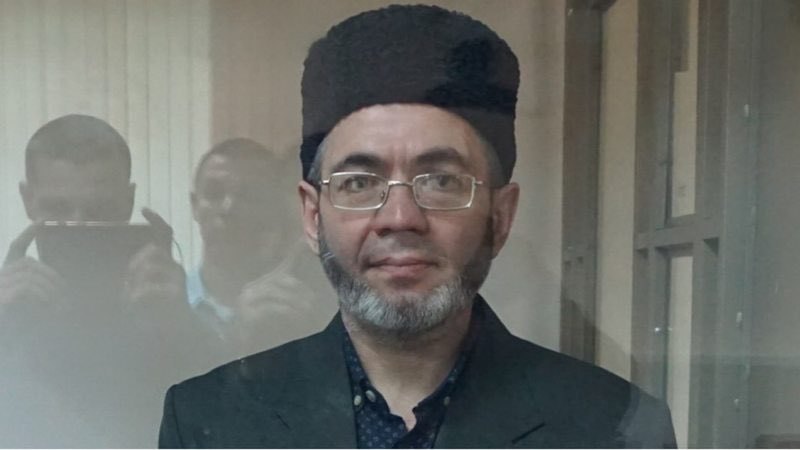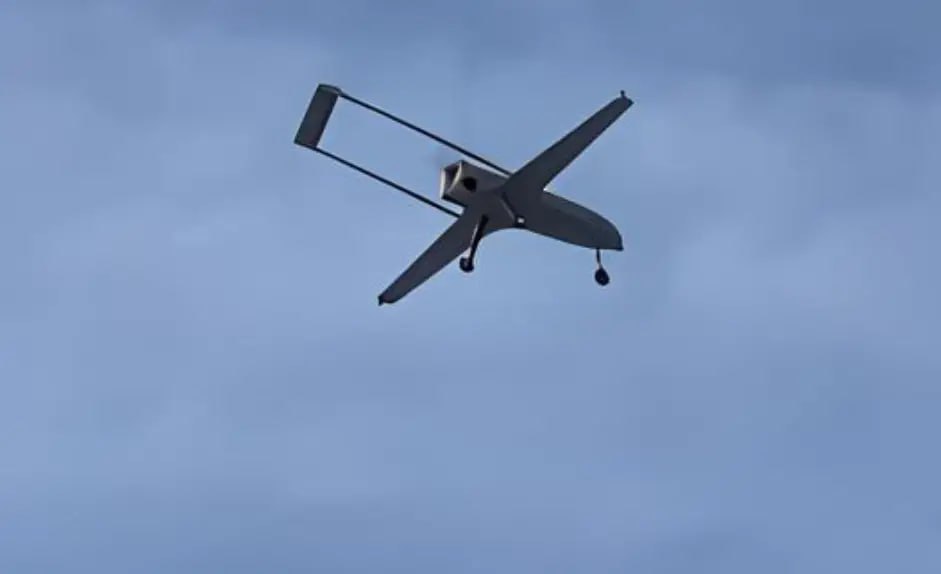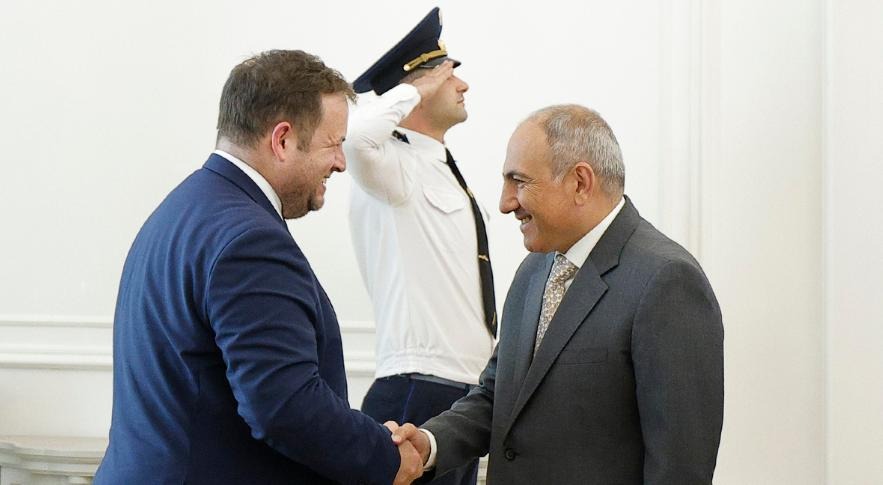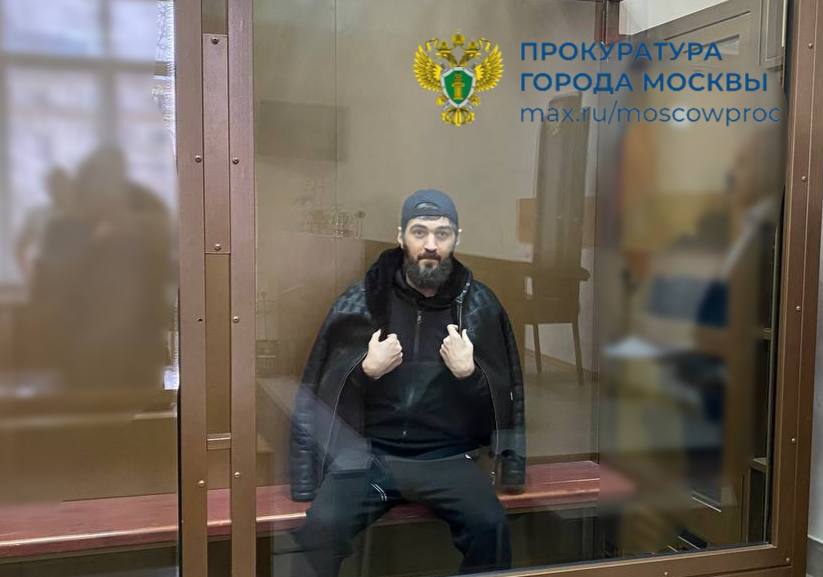Крымский татарин Эдем Смаилов, отбывающий 13-летний срок в ИК-1 Костромы, уже почти год не может получить адекватную медицинскую помощь. С момента этапирования в колонию в январе 2025 года его просьба о консультации стоматолога остается без ответа.
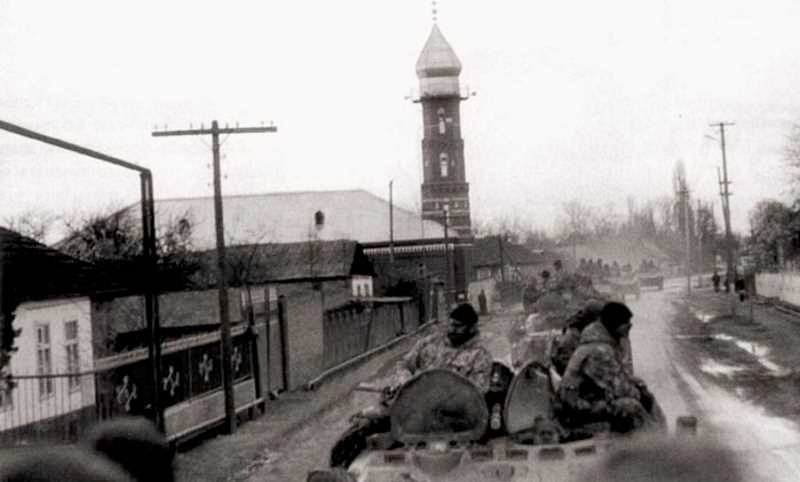
June 12, 2001
***
On the night of June 12, in the courtyard of Musa Yunusovich Gelkhaev, who lives at the address: Urus-Martan, Mikoyan St., 25, a shell fired from the location of the Russian military unit on the outskirts of the settlement exploded. Having fallen on the GAZ-69A car, which was standing under a canopy, he brought it into complete disrepair. During the period of hostilities in the Chechen Republic, Musa Gelkhaev suffered not for the first time. Earlier, during the artillery shelling of the city by the Russian military, a cow was killed in it. For a long time he cannot get a job, but he does not receive unemployment benefits either. Has a wife and four children. The eldest daughter, Zarema, is five years old, and the youngest, Magomed, is only one year old. On June 19, Musa Gelkhaev appealed to the regional branch of the special representative office of the President of the Russian Federation for ensuring the rights and freedoms of man and citizen in the Chechen Republic with a request to provide assistance in compensating for the damage caused to him during the shelling.
***
At about 4 am in the village of Novye Atagi, Shalinsky district, the Russian military blocked a residential area adjacent to Argunskaya street with armored vehicles. Bursting into the houses that were in the cordon zone, they began to take the men out. All of them were then taken to the bank of the river. Argun and there, illuminating with headlights, "sorted out". Not interested in the documents, the military separated five people and, releasing the rest of the detainees, took them away in an unknown direction.
The next day, between the settlements of Chechen-Aul and Prigorodnoye, local residents discovered four captured New Ataginians. They were beaten, frightened and hardly oriented in what was happening. None of them knew where they were kept. They only said that they were in the hands of the "Russians", who beat them severely. All four also stated that they knew nothing about the fate of Apti Nazhmudinovich Bizaev, born in 1972, who was taken away with them. As of early 2005, the fate of this man remained unexplained. According to relatives, the soldiers who came for him were wearing masks. They lifted him out of bed and, without asking for his passport, which they later found in the house, took him away towards the river.
Apti Bizaev was not married: after the first war, his father died, and the care of the family also fell on his shoulders. The abducted person was the maternal cousin of Andarbek Aslambekovich Abubakarov, born in 1975, who was taken away by the Russian military from the building of the boarding school in Novye Atagi. Subsequently, he also went missing. His other cousin (and brother of Andarbek Abubakarov), Magomed-Salah Aslambekovich Abubakarov, born in 1977, was shot dead in the yard of his own house on Gornaya Street. When the military broke in, the young man was performing ablution before prayer. This did not stop the killers: without any warning, they fired automatic bursts in his direction.
***
Residents of the village of Raduzhnoye, Grozny District, outraged by the capture of the brothers Ilyas and Khizir Metaevs and Artur Ilyasov, blocked the road near the checkpoint at the entrance to the village and demanded the release of the detained fellow villagers. As a result of their decisive actions, Ilyas Metaev returned home on the same day. The Russian military refused to give anything specific about the fate of the other two young people. On the face and body of the released young man were traces of beatings and torture. He was depressed and reacted badly to what was happening to him.
***
On the territory of the destroyed gas processing plant near the village of Dolinsky, Grozny district, local residents found the corpse of an unknown person with obvious signs of mockery in his lifetime. The victim's ears and penis were cut off, and an attempt was made to burn the body. At the place where he was found, traces of military equipment were visible. Residents of the village of Dolinsky said that the night before, they saw the movement of Russian armored vehicles near the territory of the gas processing plant. They also believed that the victim was allegedly a native of the village of Benoy-Yurt in the neighboring Nadterechny district.
***
15-year-old schoolboy Ramzan Makaev was taken to the place of deployment of the 45th regiment of the Airborne Forces of the Ministry of Defense of the Russian Federation in the vicinity of the village of Khatuni in the Vedensky district and thrown into a pit. The teenager lived in the village of Agishty, Shalinsky district. The Russian military captured him from the river. Bass, where he and his friends swam and fished. Later, money was demanded from the parents for the release of Ramzan Makaev. Whether the ransom was paid, the HRC "Memorial" is unknown. It was not possible to find out anything definite about the further fate of the kidnapped teenager.
***
At about 7 am, drunken Russian servicemen broke into the village of Alkhan-Kala in the Grozny region in an armored personnel carrier of the Interior Ministry of the Russian Federation (No. H-500). They first robbed several houses and then detained and took away the following people:
1. Said-Selim Akhmedovich (Akhmadovich) Tsutsaev, born in 1967;
2. Khasan Akhmedovich (Akhmadovich) Tsutsaev, born in 1956;
3. Aslambek Naserkhovich Baimaskhanov, born in 1975;
4. Alik Naserkhovich Baimaskhanov, born in 1978
Beating them along the way, the military took them to the village of Tolstoy-Yurt. A total of 10 people were captured that morning, including two women. The latter were soon released. There is no reliable information about the fate of the abducted men. It is known, however, that two of them, Khasan and Said-Selim Tsutsaev, were listed as missing in mid-2004. The lists based on the results of the questionnaire survey of relatives were compiled by public organizations of the Chechen Republic. One of the detained women, Raisa Saidaevna Labazanova, born in 1963, lived with her two children in Alkhan-Kala at 15 Nuradilov St. During the artillery and rocket shelling of the village on February 1, 2000, she was wounded in her leg. The very next day, it was captured by the Russian military who arrived for the “cleansing”. She was held without any charge for more than five months.
In June 2001, Raisa Labazanova applied to Memorial HRC. In her statement, she asked to be protected from further persecution.
From the statement of Raisa Labazanova (the text is printed with minimal edits):
“... On February 1, 2000, I was wounded when the village was shelled with rockets. On February 2, the federals came (to Alkhan-Kala) and said that they would take me to Urus-Martan. But they took her to the village of Tolstoy-Yurt, where she then stayed for eight days. They said that I was detained for 10 days to clarify my identity, and the next morning they took me to Chernokozovo. From there, having explained that they would be kept for 15 days, they took me to Pyatigorsk. I was in this city until May 17th. On May 18, I was transferred to Armavir, then to Krasnodar, and from there, 20 days later, they took me by stage to Novorossiysk. On July 21, I was taken to Chernokozovo and, in the presence of representatives of the Council of Europe, an act of amnesty was read out. Then they pardoned me, although I did not commit anything illegal. But on June 12, 2001, the Russian military broke into my place in an armored personnel carrier under No. 500 and took me to the village commandant's office. When asked what I was accused of, they replied that since May 15 I have been on the list of wanted persons. I spent several months without trial or investigation in custody, and now they are persecuting me again. I ask you to familiarize yourself with my case and, if I, as a citizen of the Russian Federation, have at least some rights, protect them. My passport (military) was taken away from me. I came with this statement because I am afraid that I will be illegally detained again. I have two children, old parents, no brother or sister. Please help me..."
***
At 15.30 in Grozny at the intersection of Pervomayskaya and Griboyedova streets, moving against the main traffic, a Russian armored personnel carrier ran over a VAZ-2106 car (registration plate C 836 XO 95/rus). Sultan Rizvanovich Khidishev, head of the proctology department of the city hospital No. 9, who lived at the address: Grozny, Dyakova St., 4, was driving the "six". As a result of the collision, he was taken to the intensive care unit of his own hospital in a serious condition. The armored personnel carrier disappeared from the scene, but later it was found out that it belonged to the military commander's office of the Leninsky district. The side number of the combat vehicle consisted of three digits, the first two of which were smeared with paint. The last number - 6 - was remembered by numerous witnesses of the collision.
***
Alexey Andreev, an OMON officer of the Saratov Region, shot dead Zarema Mukhatdinovna Gaerbekova, born in 1974, who lived in the village of Alkhan-Yurt, Urus-Martan District, at the address: Chkalova St., 5. Urus-Martan in Alkhan-Yurt, not far from the Russian checkpoint (the area of the former cafe "Bashlam"). The Saratov riot police on duty on it constantly bought food from her and ordered meals, including on credit.
On June 12, at 4 pm, Alexey Andreev had a conflict with Zarema Gaerbekova. The reason was the purchase not paid on time. During the quarrel, the riot policeman threatened that he would do everything so that the trader "would no longer appear at the crossroads." At about 6 pm, he followed her out of her kiosk and went to the toilet about fifty meters from the checkpoint, and aimed at her in the back with a machine gun. The woman died on the spot from her wound. Three young children were left orphans.
A criminal case has been opened on the fact of the murder, but, as is clear from the testimony of the sister of the deceased, Makka Gaerbekova, which she gave in the Nazran office of the Memorial HRC on July 12, 2001, Aleksey Andreev was not taken into custody and left Chechnya.
***
In the village of Dyshne-Vedeno, Vedeno district, the Russian military killed a young resident of this settlement Nasagaev (his name and exact address of residence could not be specified). As it became known, on the day of the murder, from the central part of the village, holding a video camera in his hands, he was heading to his home on Lenin Street. On the road along which his path ran, an armored personnel carrier suddenly stopped, and the armed men who were on the armor opened aimed fire. The young man fell. According to eyewitnesses, while shooting, the military shouted that they were allegedly filmed on a video camera. The wounded Nasagaev was loaded into an armored personnel carrier and taken to the place of deployment of the Russian military unit in the vicinity of the village.
The head of the administration and residents of Dyshne-Vedeno appealed to the military with a request to release a fellow villager who, apparently, needed medical assistance. However, they were given his corpse. Whether he died a natural death or whether he was finished off already on the territory of the military unit is unknown.
***
After 11 p.m., the village of Starye Atagi, Grozny region, came under artillery fire from the 205th Russian motorized rifle brigade stationed in the vicinity of the neighboring settlement of Lakha-Varanda. As a result, the houses of three local residents were destroyed, about ten houses were damaged. When the inhabitants of Starye Atagi turned to the military with a demand to explain the reason for the night shelling, they were told: “We were celebrating the Independence Day of Russia.”
From the book "People Live Here", Usam Baisaev, Dmitry Grushkin, 2006
